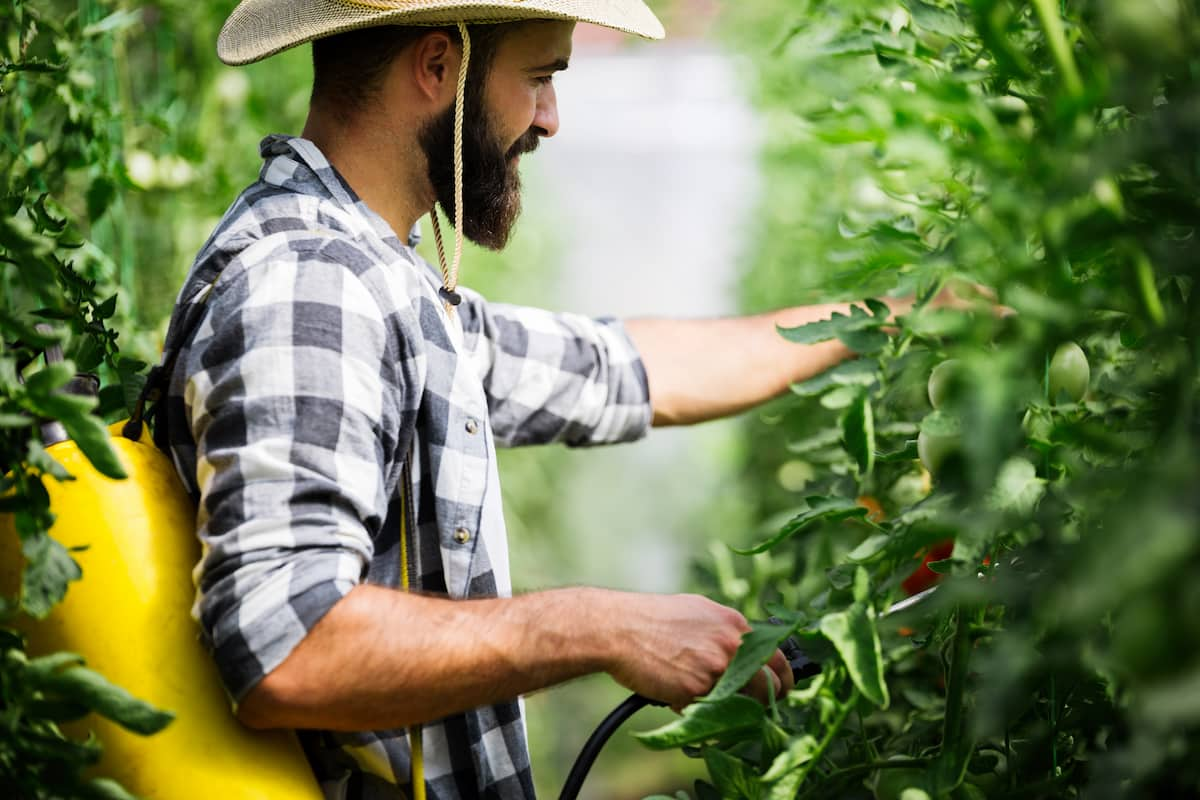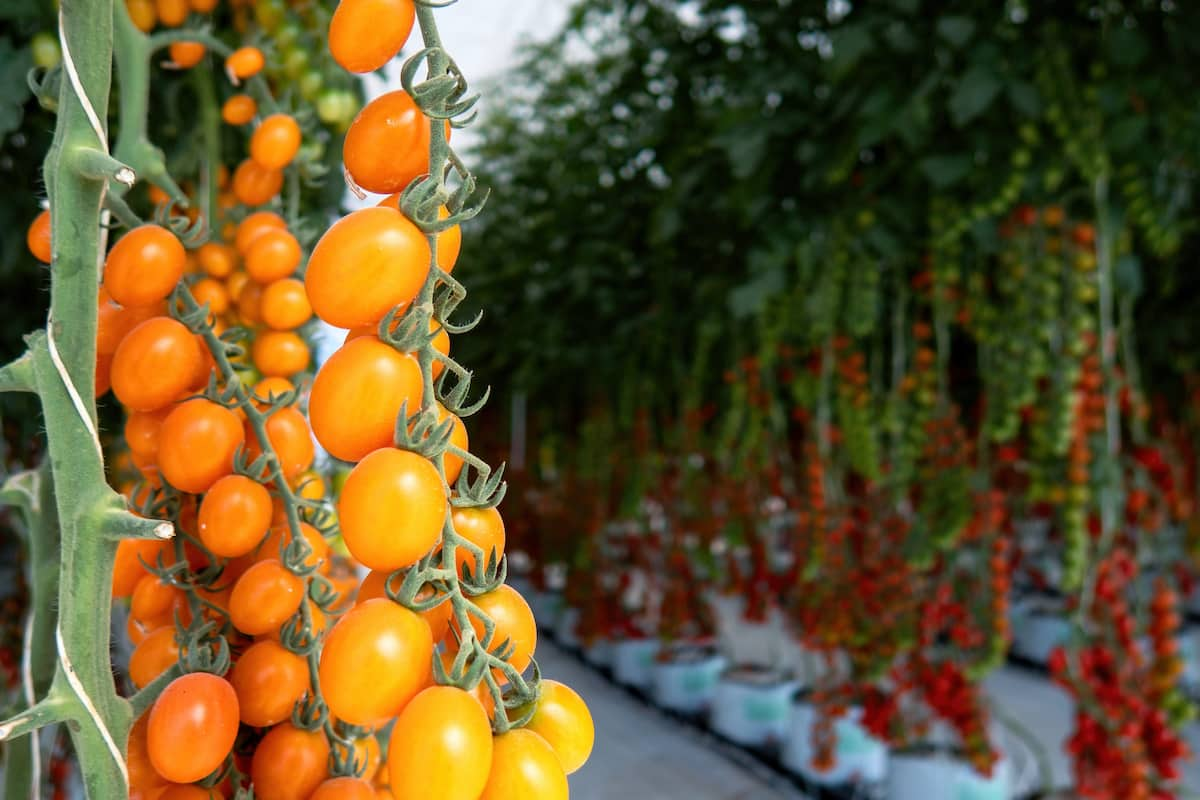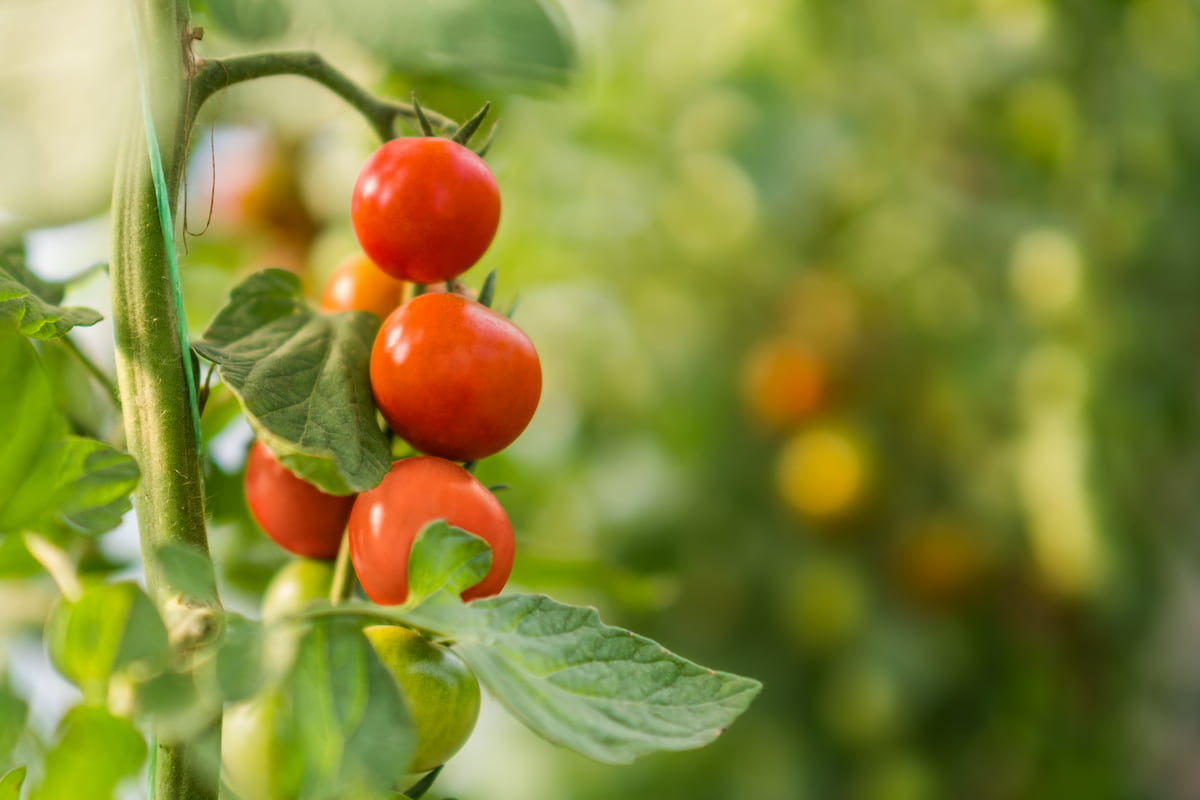Hydroponic greenhouse tomato gardening has grown popular because of its greater yields, lower water consumption, and fewer pests. Below we learn hydroponic tomato production, hydroponic nutrient solution formula for tomatoes, and key rules to start from scratch.

Hydroponic Tomato Farming in a Greenhouse
Greenhouse Selection and Design
Selecting the right greenhouse and designing it to meet the specific needs of your hydroponic tomato farm is crucial for success. The greenhouse should be large enough to accommodate the desired number of tomato plants and allow enough space for equipment and workers to move around comfortably. The design should incorporate adequate ventilation, heating and cooling systems, lighting, and a watering system.
- Location: The greenhouse should be located in an area with access to sunlight and water. It should also be easily accessible to workers and equipment.
- Size: The greenhouse should be large enough to accommodate the desired number of tomato plants and allow enough space for equipment and workers to move around comfortably.
- Material: Greenhouses can be made of different materials, including glass, polycarbonate, and polyethylene.
- Shape: Greenhouses can be designed in different shapes, including gable, quonset, and hoop. The shape should be selected based on the crop type and the grower’s preference.
Hydroponic System
Tomatoes grow best in the NFT system. This system is efficient in water and nutrient usage and allows for easy monitoring and adjustment of nutrient levels. Also, this system is more complicated to set up.
Tomato Variety Selection
The selection of tomato varieties is crucial in hydroponic farming, as it can significantly impact the yield and quality of the fruits. Popular tomato varieties for hydroponic farming include beefsteak, cherry, and grape tomatoes. Here are some tips for selecting the right tomato variety:
- Disease resistance: Pick tomato types that are resistant to the most prevalent diseases that affect tomatoes, such as verticillium wilt, fusarium wilt, and tomato mosaic virus.
- Growth habit: Select determinate varieties if you have limited space in your greenhouse, as they grow to a specific height and do not require staking.
- Fruit size: Consider the size of the fruit when selecting a variety. Cherry and grape tomatoes are popular for their small size and high yield, while beefsteak tomatoes produce larger fruits but may require more space and support.
- Taste: Choose varieties that are known for their taste and flavor.
Growing Media
The choice of growing media in hydroponic farming is critical as it affects the plant’s root development and nutrient uptake. Commonly used growing media for tomato farming include rockwool, coco coir, perlite, and peat moss. Each medium has advantages and disadvantages, and growers should choose the medium that best suits their needs.
- Rockwool is a popular growing medium because it is lightweight, sterile, and easy to handle. However, there may be additional costs and requirements for disposal.
- Coco coir, which is derived from coconut fibers, is a biodegradable and sustainable growth medium. It’s light, breathable, and great at holding in moisture. However, it may require more frequent irrigation and nutrient application.
- Perlite is a lightweight and porous medium that provides good aeration and drainage. It is also affordable and easy to handle. However, it may require frequent irrigation and nutrient application.
- Peat moss is a popular organic growing medium with excellent water retention and aeration. It is also affordable and easy to handle. However, it may not be sustainable as it is a non-renewable resource.
In case you missed it: Hydroponic Cucumber Farming in a Greenhouse: Key Rules to Start from Scratch

Nutrient Solution Management
Tomatoes require specific nutrients for growth and development, provided through the hydroponic system’s nutrient solution. The nutrient solution should be well-balanced and carefully managed to prevent deficiencies or toxicities affecting plant growth and yield. The nutrient solution should balance essential nutrients such as nitrogen, phosphorus, potassium, calcium, magnesium, and trace elements.
The conductivity level of the solution should be measured on a consistent basis, and the pH level of the solution should be kept between 5.5 and 6.5 all the time. Growers should also adjust the nutrient solution based on the growth stage of the plants. For example, during the vegetative stage, the plants require higher nitrogen levels, while during the fruiting stage, they require higher phosphorus and potassium levels.
Lighting
Because of its impact on development and harvest, light is crucial in hydroponic tomato production. While direct sunlight is ideal for plant growth, it may not be bright enough in certain locations. Supplemental lighting gives plants the proper amount of light for the right period of time. When it comes to supplementary lighting in hydroponic farming, LED grow lights are by far the most popular option. They last a long time, don’t use a lot of power, and can be adjusted to emit just the right wavelengths of light for plant development. But buying and setting them up might be pricey.
Temperature and Humidity Control
Tomatoes need certain temperature and humidity ranges for maximum growth and fruit production, making temperature and humidity management crucial in hydroponic tomato growing. Tomatoes thrive at temperatures between 15 and 20 degrees Celsius at night and 18 to 28 degrees Celsius during the day. The ideal relative humidity ranges from 60 to 80 percent.
These conditions can be maintained with the help of greenhouse heating and cooling systems. In hot weather, greenhouse temperatures can be lowered with the use of evaporative cooling technologies, such as fans and pads. When it’s chilly outside, it helps to have a heating system like a boiler or furnace to turn up the heat. You can adjust the relative humidity in a room using either a humidifier or a dehumidifier.
In case you missed it: Hydroponic Capsicum/Bell Pepper Farming in a Greenhouse: Key Rules to Start from Scratch

Conclusion
In conclusion, hydroponic tomato farming in a greenhouse requires careful planning and management to ensure optimal growth and yield. By following these key rules, growers can successfully start a hydroponic tomato farm from scratch and produce high-quality fruits all year round.
- Feed Your Flock for Less: Top 10 Tips to Save on Chicken Feed
- Ultimate Guide to Ossabaw Island Hog: Breeding, Raising, Diet, and Care
- Hatching Answers: The Top 10 Reasons Your Chickens Aren’t Laying Eggs
- Eggs and Economics: Breaking Down the Cost of Raising Backyard Chickens
- Defend Your Greens: Proven Methods to Keep Iguanas Out of Your Garden
- Ultimate Guide to Cinnamon Queen Chicken: A Comprehensive Guide for Beginners
- Ultimate Guide to California Tan Chicken: Breeding, Raising, Diet, Egg-Production and Care
- Ultimate Guide to Marsh Daisy Chicken: Breeding, Raising, Diet, and Care
- 10 Types of Chicken Farming Businesses You Can Start for Profits